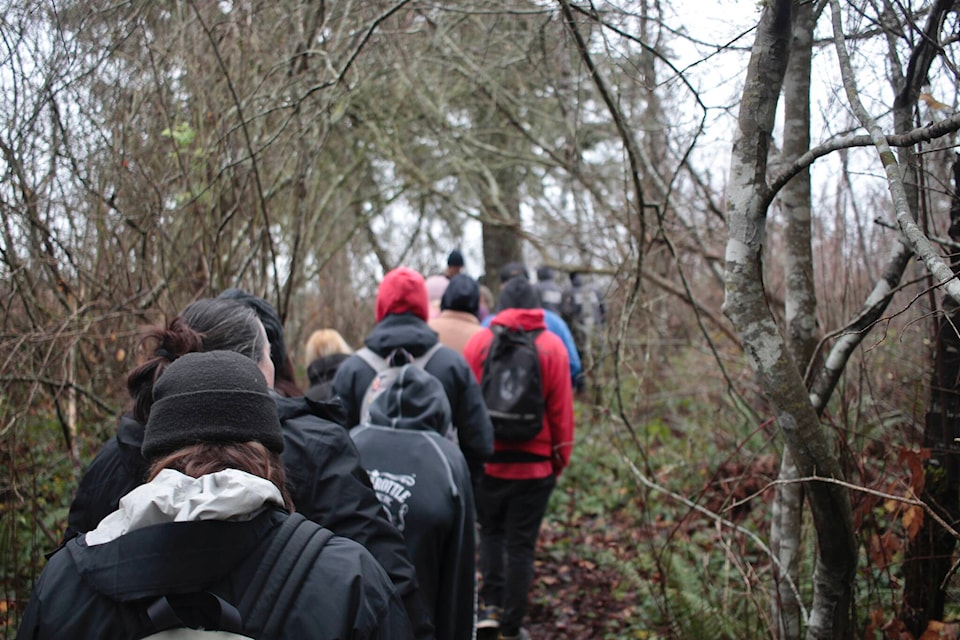Before the group of Robron students, teachers, Greenways Land Trust, We Wai Kai Guardians and We Wai Kum Guardian Watchmen set off into the forest near the confluence of Nunn’s Creek and the Campbell River, Greenways’ Kyle Fitzpatrick told everyone to stand still for a moment.
“Listen,” he said, pausing. “It’s silent.”
The only sounds were a few birds flying by and the wind in the now-bare trees. It was cold, but not unseasonably so, and the people gathered were bundled up. But as they set out into the woods they started to warm up to each other.
The outing on Monday, Nov. 27 was one of the first trips to the field for the new partnership between Greenways Land Trust and the Indigenous guardian programs. The project, called the “Revitalizing the Campbell River” project, was launched this fall. Already there have been in-school sessions at Carihi and Robron schools, and a few other opportunities for field work.
“We’re getting to connect on educational basis with a lot of students,” said We Wai Kum Guardian Watchman Danny Hurry. “We’re getting them to know what we’re doing, but also getting them involved in the work for doing as well. Then people can see what all this work is about and why restoration is so important. We just need to be more on top of it with being able to restore and preserve what we have left.”
The goal on Monday was to show students around the area and then go through and clear out some invasive species.
Along the tour, the Guardians from both Nations showed areas where conservation has already taken place. For years, the two groups have been working to do things like plant native grasses, prevent overfeeding by certain species, remove invasive plants and garbage and essentially restore the areas in question to their natural state. Their work has paid off as well, Guardians told the students how previously the wild lands they were looking at looked closer to being gravel pits.
“This area is quite pristine. It’s kind of a nice to show the more pristine side,” Hurry said. “We’ve done a lot of transplanting here as well … We’ve got goose fencing set up too. This is one of the first areas where we’ve done a lot of transplanting.”
However, the thing about invasive plants is that they are very hard to get rid of. Greenways staff Camille Andrews and Fitzpatrick told the students about a few of the species — Himalayan Blackberry and Scotch Broom — and how to get rid of them. From there, the students were sent out to eradicate any invasive plants they could find.
The educational focus of the program helps students explore concepts like watersheds and stewardship, but also helps promote the work of the Guardian programs, especially for students who may be considering a career in conservation.
“A lot of people aren’t really educated on this stuff,” said We Wai Kai Guardian Shane Pollard. “So just even the small differences make a big change. If you can get someone to do those small differences, it helps out a lot.”
The program, which was funded by The Indigenous Watersheds Initiative (IWI), will continue in the spring with more field work, including planting native species.
RELATED: First Nations Guardians and Greenways partner to revitalize the Campbell River watershed
Pumpkin patches across Canada spooked by the howling of climate change
